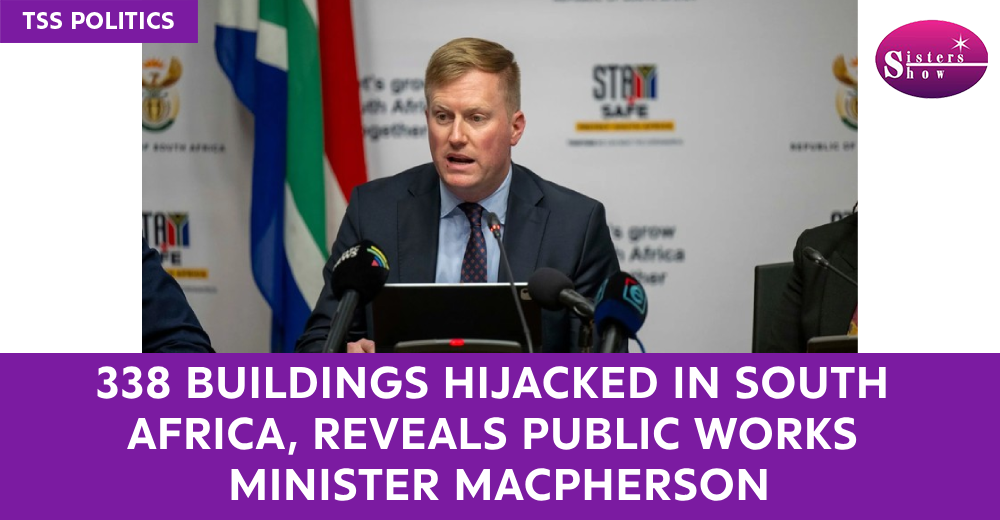
338 Buildings Hijacked in South Africa, Reveals Public Works Minister MacPherson
In a startling revelation, Public Works and Infrastructure Minister Dean MacPherson announced that 338 government buildings across South Africa have been hijacked. Speaking at a media briefing in Parliament, Cape Town, on August 28, MacPherson highlighted the urgent need for action against the ongoing illegal occupation of these properties.
MacPherson disclosed that the Department of Public Works owns approximately 88,000 buildings, many of which have fallen prey to hijackers. To address this issue, the department is conducting an extensive audit to establish an accurate asset register. The minister emphasized the need for a strategic approach to managing state assets, stating, “We need to optimize, rationalize, and dispose of buildings, but we cannot allow our properties to contribute to crime.”
The minister recounted his recent meeting with the mayor of eThekwini, where they discussed several hijacked and poorly maintained buildings. MacPherson expressed his concern, noting that the government neither uses nor plans to use many of these properties, creating a breeding ground for criminal activities. “We can’t allow these buildings to continue contributing to high crime levels across the country,” he added.
Sifiso Mdakane, the Director-General of the Department of Public Works, supported MacPherson’s statements by outlining the department’s ongoing efforts to identify hijacked buildings. He highlighted the financial burden of securing these properties, noting that approximately R11.8 million is spent annually on such efforts. “There is a cost duplication when we don’t have an accurate count of these buildings,” Mdakane said.
The issue of hijacked buildings is particularly prevalent in Gauteng, where many such structures are occupied by low-income, unemployed, and disadvantaged residents. These buildings, often abandoned and in a dilapidated state, have become makeshift homes for numerous families, despite lacking essential services like water, sanitation, electricity, and safety measures.
Recently, a tragic fire in Jeppestown, Johannesburg, underscored the dangers associated with hijacked buildings. The blaze, caused by illegal electricity connections, claimed four lives and injured three others. This incident followed another deadly fire in August last year, where a fire tore through the Usindiso Ministries for Women and Children in Johannesburg’s CBD, resulting in the deaths of at least 77 people.
Adding to the crisis, over 123 undocumented foreign nationals were arrested on Tuesday for illegally occupying hijacked buildings in the Point area of Durban, further highlighting the growing problem.
The government’s approach to managing its assets is now under scrutiny, with many calling for a swift resolution to prevent these buildings from becoming hotspots for crime and tragedy.
Stay updated with the latest South Africa politics news with The Sisters Show.
Read More:- EFF Slams Joburg Mayor’s Proposal to Hire Foreign Nationals for JMPD




